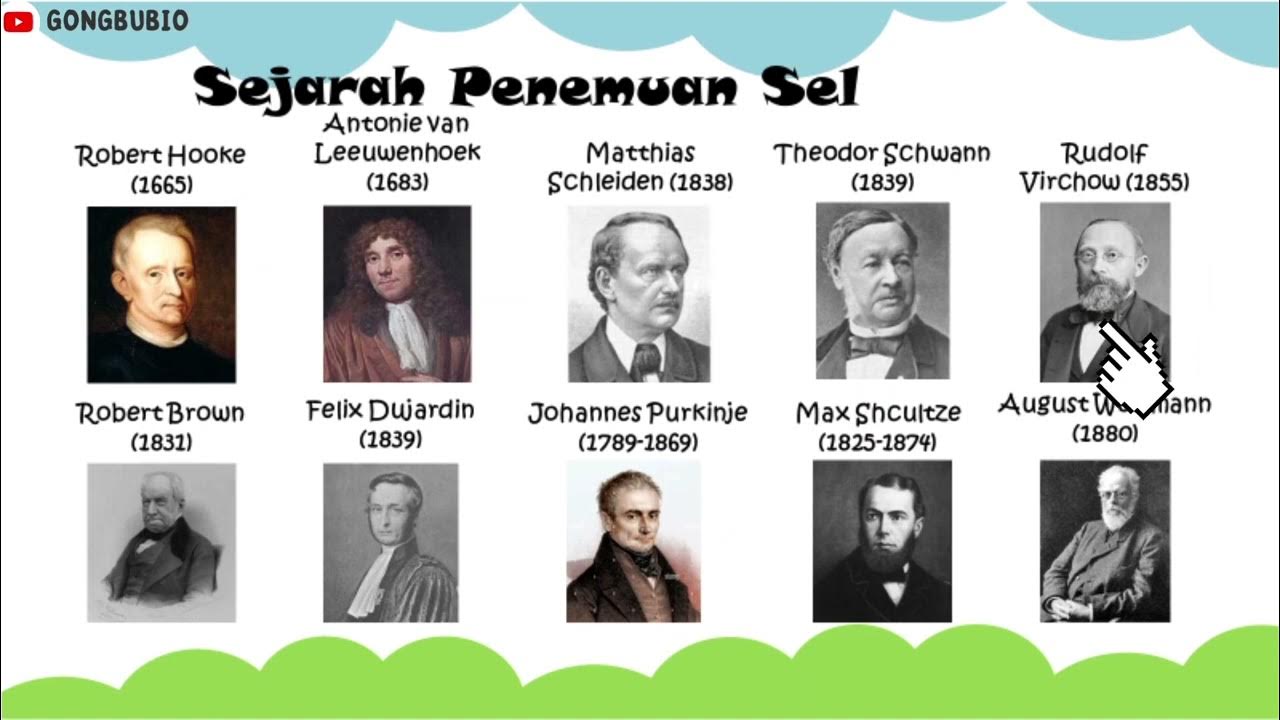A Tour of the Cell: Crash Course Biology #23
Summary
TLDRThis script from Crash Course Biology explores the history and evolution of cell theory. It begins with Aristotle's belief in spontaneous generation, moves through Robert Hooke's discovery of cells, and discusses the contributions of Schwann, Schleiden, and Virchow to classical cell theory. The differences between prokaryotic and eukaryotic cells are highlighted, along with the unique structures and functions of plant and animal cells. The script also delves into endosymbiosis and the work of Lynn Margulis, concluding with modern cell theory and the importance of scientific inquiry.
Takeaways
- 📚 Ancient Greek philosophers, including Aristotle, believed in 'spontaneous generation', the idea that life could arise from nonliving matter.
- 🐭 The concept of spontaneous generation was used to explain phenomena like mice appearing in grain silos, thought to arise from nonliving materials.
- 🧬 Modern science has disproven spontaneous generation, establishing that life is composed of cells, the basic building blocks of life.
- 🔬 Robert Hooke's improvements to the microscope in 1665 led to the discovery of 'cells' in cork, coining the term we use today.
- 🌿 The mid-1800s saw the proposal by Schwann and Schleiden that all organisms are composed of cells, forming the basis of cell theory.
- 🔬 Dr. Rudolf Virchow contributed to cell theory with the assertion that all cells come from pre-existing cells, a principle known as 'Omnis cellula e cellula'.
- 🔬 The distinction between prokaryotic and eukaryotic cells was understood in the 1900s, with eukaryotes being more complex and having a nucleus.
- 🌳 Eukaryotic cells, like those in plants, have additional structures like cell walls, large vacuoles, and chloroplasts for energy conversion.
- 🏙️ Animal cells, being eukaryotic, contain organelles like the nucleus, ribosomes, endoplasmic reticulum, Golgi apparatus, and mitochondria, each with specific functions.
- 🌱 The theory of endosymbiosis, proposed by Lynn Margulis, suggests that mitochondria and chloroplasts originated from symbiotic prokaryotic cells.
- 🔬 Modern cell theory expands on classical cell theory by incorporating concepts of energy flow, similarities in cell structure among species, and genetic information transfer during cell division.
- 🔬 Scientific advancements, including improved microscope technology, have been crucial in the evolution of our understanding of cells and their structures.
Q & A
What was the concept of 'spontaneous generation' that Aristotle and others believed in?
-Spontaneous generation was the belief that nonliving matter could spontaneously create life. It was used to explain phenomena such as the appearance of mice in a grain silo or the formation of babies from semen and menstrual blood.
How did the understanding of life's origins change with the discovery of cells?
-The discovery of cells by Robert Hooke in 1665 changed the understanding of life's origins by showing that life is made up of tiny, individual building blocks called cells, rather than arising spontaneously from inorganic material.
What are the three cornerstones of classical cell theory?
-The three cornerstones of classical cell theory are: 1) All organisms are made from cells, 2) The cell is the basic building block of life, and 3) All cells come from pre-existing cells that have multiplied.
What are the key differences between prokaryotic and eukaryotic cells?
-Prokaryotic cells lack a defined nucleus and have their genetic material in the cytoplasm, while eukaryotic cells have a defined nucleus enclosed by a nuclear membrane where genetic material is stored.
How did the understanding of cells evolve with the discovery of organelles?
-The discovery of organelles within eukaryotic cells, such as the nucleus, mitochondria, and chloroplasts, showed that cells have specialized internal structures that perform unique functions, leading to a more complex understanding of cellular processes.
What is the significance of the endoplasmic reticulum (ER) in a cell?
-The endoplasmic reticulum (ER) is significant as it has two sections: the rough ER, which is involved in protein synthesis, and the smooth ER, which is involved in lipid synthesis and detoxification processes.
What is the function of the Golgi apparatus in a cell?
-The Golgi apparatus functions as a protein sorting facility and a part of the endomembrane system. It packages proteins into vesicles, which are then transported to various parts of the cell.
What is the role of mitochondria in a cell?
-Mitochondria are the 'power plants' of the cell, where energy for all of life's cellular processes is produced by breaking down molecules like glucose through cellular respiration.
What is the concept of endosymbiosis and how does it relate to the origin of eukaryotic cells?
-Endosymbiosis is the concept that mitochondria and chloroplasts originated from prokaryotic cells that merged in a symbiotic relationship with a larger cell. This theory suggests that these organelles were once free-living bacteria that became incorporated into eukaryotic cells.
What are the three additional ideas proposed by modern cell theory?
-Modern cell theory adds three central ideas to classical cell theory: 1) Energy flows within cells, 2) Similar species have similar cells, and 3) Cells divide and pass along their genetic information to new cells.
Why is the surface-to-volume ratio important in determining cell size?
-The surface-to-volume ratio is important because it limits cell size. As cell size increases, the volume increases faster than the surface area, which could limit the cell's ability to exchange materials and maintain homeostasis.
Outlines

This section is available to paid users only. Please upgrade to access this part.
Upgrade NowMindmap

This section is available to paid users only. Please upgrade to access this part.
Upgrade NowKeywords

This section is available to paid users only. Please upgrade to access this part.
Upgrade NowHighlights

This section is available to paid users only. Please upgrade to access this part.
Upgrade NowTranscripts

This section is available to paid users only. Please upgrade to access this part.
Upgrade NowBrowse More Related Video
5.0 / 5 (0 votes)





